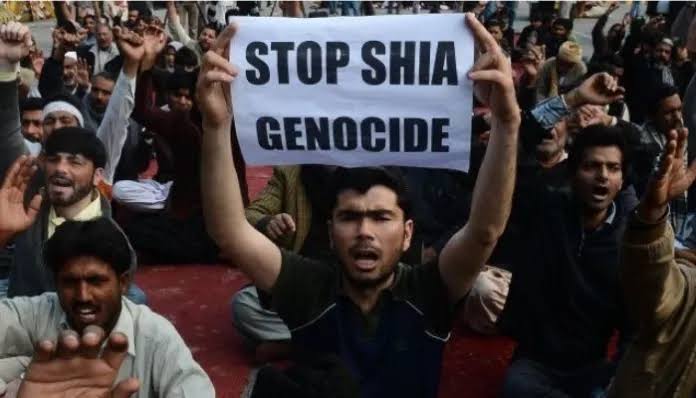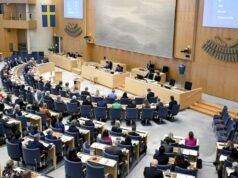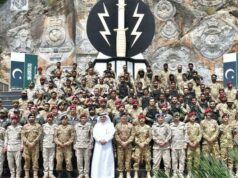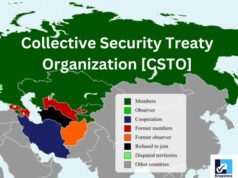Shias Live in terror due to increased sectarian violence in Pakistan

In Pakistan, unarmed and helpless Shias are marching on a one-way street to annihilation, as the mercenaries who treat Shias like sitting ducks on the receiving end still remain at large and protected by the military, reported Baltimore Post-Examiner (BPE).
After Iran and India, Pakistan has the world’s third-largest Shia community, accounting for ten per cent of the total population, however, more than half of Pakistani Muslims are wary of identifying with Shias as fellow believers, the report said.
Shias feel more vulnerable to prejudice and persecution as perception shifts, and as a result, Shia killers feel more confident attacking them. Shia assassinations were not uncommon prior to the establishment of Pakistan, but they became more frequent and severe during and after the Afghan War, the report stated further, adding that the Pakistani army trained and recruited many anti-Shia individuals for the Soviet-Afghan war.
Pak army provided them ammunition, weapons, vehicles, and judicial immunity, which simultaneously increased their effectiveness against Shias, reported BPE.
Moreover, numerous anti-Shia organizations have become immortal over time by forming alliances with ISIS, Al-Qaida, and the Taliban. Shias consistently question the state’s neutrality in the face of free-roaming Shia killers, it added.
Human Rights Watch’s 2013 report acknowledges anti-Shia terrorists’ ties to the Pakistani military, the report said, adding that under military pressure, the police and judiciary disregard sectarian crimes, which stimulate terrorists to kill Shias wherever and whenever they please.
Canada’s International Forum for Rights and Security reported that over 4,000 Shias were reportedly murdered for their religious beliefs between 2013 and 2021. The Washington-based United States Institute for Peace said 3,800 Shias were murdered between 2007 and 2013, with 325 of those killings occurring in 2012.
Pakistan’s Human Rights Commission reported more than 200 terrorist attacks resulted in nearly 700 Shia deaths and over 1,000 Shia injuries in 2013. The United States Commission on International Religious Freedom also reported that over 600 Shias were killed for their faith between 1999 and 2003.
The assassins also target and destroy Shia religious centres in order to discourage festivals and rituals and stifle cultural identity, the BPE said, adding that between 2002 and 2018, state-sponsored terrorists attacked and destroyed 104 Shia centres.
The military kidnaps Shias for allegedly opposing the Taliban or cooperating with Iran’s mullah regime. Shias are being held captive by military intelligence and Rangers with no opportunity for evidence gathering, a hearing, or an appeal, it said.
According to Shia organisations, 300 Shias were presumed missing as of the end of 2018. That figure rose to 700 by 2021, but the government only acknowledges a small percentage of such cases.
In places like Karachi, the military conducts illegal home raids and confines Shia suspects in secret torture cells for indefinite periods of time. Despite their reservations about the judicial system’s fairness, Shias would prefer formal indictment and court trial to illegal abduction and torture, the report said.
However, the Pakistan Army is not willing to oblige because the policymakers consider illegal detentions and extra-judicial torture and murder as effective tools in combating existential threats to the country, reported BPE.
The Federal Commission on Enforced Disappearances appears powerless to track down or prevent these kidnappings. In this regard, the International Commission of Jurists has chastised the Pakistani government for allowing and maintaining impunity for forced disappearances and failing to compensate victims.
Terrorist organisations such as TTP, Jaish-e-Muhammad, Lashkar-e-Islami, and Ansar-ul-Islam, which have access to military weapons, add fuel to the fire during attacks on Shias, stated the report, adding that Mast Gul, a member of the Harkatul Mujahideen and the Al-Qaida-linked International Islamic Front, was among the terrorists involved in the Shia attacks in Kurram.
Chitral was once a stronghold of Ismailia Shias. They now make up less than 35 per cent of the district’s population. Chitral is strategically important for the Pakistani military and Taliban because it provides an easy road link to Tajikistan via the Wakhan Corridor, the report said.
Forced conversion of locals and the arrival of Sunni Afghans pushed Shia Ismailia to the brink of socio-economic collapse, reported BPE.
The situation in the neighboring Ghizer district of Gilgit-Baltistan, where Shia-Ismailia forms a small majority, is similar to that in Chitral. Decades of conversion forced marriages of girls to Sunnis, and the settlement of Sunnis from Pakistan have reduced the Ismailia ratio from more than 80 per cent of the population to less than 60 per cent.
Pakistani Shias, like Ahmadis, are sitting on a ticking time bomb, and the fear of ex-communication is forcing Shias to abandon their core beliefs in order to be considered Muslims.
Like Ahmadis, thousands of Pakistani Shias are currently facing blasphemy cases for merely proclaiming their beliefs and observing religious festivals.



